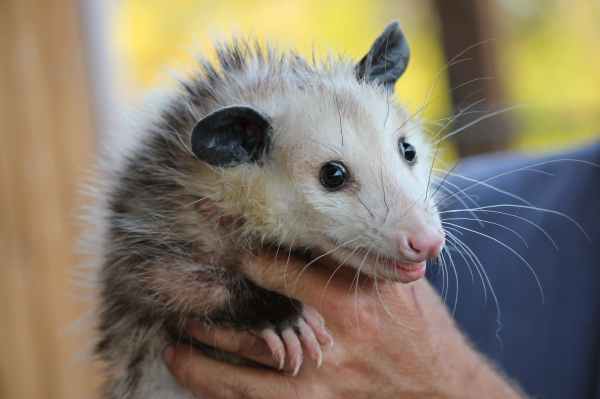Pests and Varmints and Vermin, Oh My (Part I)

Today I saw a tweet from our fabulous local wildlife rehab center, City Wildlife, of a baby opossum who was brought in after he was attacked by a cat. The picture was predictably adorable, so I went to read the comments, curious what people would say as I know some people decidedly do not think that opossums, baby or not, are adorable.

(Not the same baby opossum, but still cute in my book!)
@GinsuCajun wrote: “Opossum are varmints and are shot on sight, here in Texas. They kill poultry and small pets. Interesting how they’re viewed differently, geographically.” This observation was followed by several comments that were not quite as politic or insightful, but making the point that they think opossums are pests.
So I’d like to talk about a few words: varmint, pest, vermin, and “trash animals.” They’re bandied about quite frequently, and deserve a closer look especially because so many native animals found in urban areas are sometimes grouped into this category. “Pest” is a powerful label, able to demote the importance of the existence of an entire species, or even to make it desirable to eradicate the species.
Species labeled pests are often given little consideration beyond how to control their numbers and behavior so as to not interfere with humans. At times, they are even excluded from research into human-wildlife conflict; for example, a 2009 review of human-felid conflict defined human-wildlife conflict as “the situation that arises when behavior of a non-pest, wild animal species poses a direct and recurring threat to the livelihood or safety of a person or a community and, in response, persecution of the species ensues” (emphasis added). However, this potentially excludes a large number of important members of an ecosystem from consideration. It also leaves unanswered the process by which a species becomes defined as a pest. Certainly many ranchers in the American southwest would consider the Mexican wolf to be a pest, and yet in the conservation biology and wildlife management communities the species is considered a valuable and highly endangered species.
A while back I discussed the concept of “pest” as related to pigeons and geography, arguing that one of the reasons animals are labeled pests is when they’re seen as out of place. In other words, wildlife that does what wildlife is “supposed” to do – stay out of human-dominated landscapes – is fine, but once it crosses the border between a rural area and a suburban area (or a “wild” area and an agricultural field, for that matter) it becomes a pest. The problem with this is that it artificially separates humans from nature and assumes that cities are not natural – and by extension that humans are not natural and not part of nature. This binary worldview is ingrained in much of the world, but ignores the reality that humans are indeed part of nature, as are our cities and the non-human animals, plants, and microbes that share these environments. Natural processes occur in cities just as they do outside of cities; for example, we’re seeing evolution in action with many urban species (there’s a new book, Darwin Comes to Town by Menno Schilthuizen, that discusses this at length. It’s sitting on my desk and I haven’t started reading it yet, but you might want to check it out!).
There’s a great quote that’s often attributed to Margaret Mead (I believe that there’s some uncertainty about who actually said it, but it’s still a great quote): Cities are to humans what hives are to bees and dens are to foxes. This can probably be interpreted in many different ways, but to me it’s a reminder that we are indeed a part of nature, as are our shelters and other creations.
Next in this series we’ll talk about how humans sometimes attribute human characteristics to animals and how that can help form narratives about pests!
Trackbacks